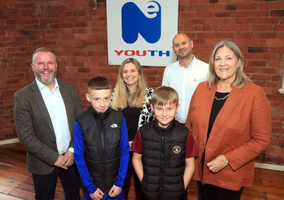Charities have “inadvertently overlooked” the needs of younger generations in their fundraising and marketing and must adapt to appeal to them more, a report has said.
Tomorrow’s Donor, Today is the first installment of a research project by the GOOD Agency, Eden Stanley and the Chartered Institute of Fundraising (CIoF).
The report identifies five trends from the research that generations of people under 50 are looking for and provides guidance on how charities can engage future donors.
Charities seen as ‘old-fashioned’
Some respondents felt that businesses were more likely to solve social issues than charities because they have access to more resources and technology.
Another key issue raised was the perception of charities, as respondents said they can be seen as “old-fashioned”, “cautious” and “uninspiring”.
Indeed, the researchers asked generative artificial intelligence to illustrate “typical charity donors” and “typical charity ads” which the report said mirrored these sentiments.
The image of a typical charity donor showed a well-dressed white man, while the typical charity adverts showed people looking upset in a downcast and grey environment.
“The sector needs to work hard to overcome these perceptions to truly inspire the public and engage with younger generations,” the report reads.
Respondents to the research also used words like “pastiche”, “cheesy” and “poor quality” to describe charity adverts.
Charity shops were the most engaged with
Over ten days, respondents were asked to record any sightings or encounters they had with charities.
Charity shops ranked the highest, followed by email or social media, then paid advertising, community collection and street fundraising.
“Worryingly, most participants could not recall seeing any charity communications at all during this period. This raises an important question regarding whether the sector is effectively reaching younger generations in their preferred environments and media channels,” the report reads.
Donations ‘first thing to go’ when purse strings tighten
Respondents reported that charity donations were the “first thing to go” when incomes became stretched.
A few of the reasons that people said they did not donate to charity were not being able to afford it, a lack of knowing what the charity was spending its funds on, and when a story was not told compellingly.
Reasons given as to why people did donate to charity were the personal proximity to a cause, the desire for a feel-good moment or supporting a friends or family members’ fundraising efforts.
Trends that charities can tune into
The report identified five “macro-trends” within the online community that it believes charities can tap into to engage donors.
The first was when charities present proven solutions to social issues. It gave the example of how a Crisis advertisement presents a life after homelessness, demonstrating the changes being made through donors' gifts.
It advises charities to review their fundraising asks for “tangibility and inspiring hope” and to research “the most effective way to frame your stories”.
The second trend was “contagious positivity”, where charities can craft joy for donors by updating them on how they are helping people or through humorous ads.
Therefore, the report suggests charities generate new products that make giving more fulfilling for donors and grow their gaming products “which lead on joy and enjoyment”.
Another trend was respondents saying they wanted to see changes in their local communities, and the report suggests charities engage with this by integrating charity shops and other regional properties into larger charity campaigns.
One participant said: “Bring it down to smaller issues. Just look at poverty in Strathclyde. It’s a much smaller issue than global poverty. If we could just look at local areas first then expand out, we’ll have success”.
‘Good is listening well, not speaking for’
The fourth macro-trend identified was charities listening to the people they aim to support. The report suggests charities centre people with lived experience in their storytelling and the organisation.
The report reads: “Reject the temptation to speak in an institutional voice and instead work hard to listen to your audiences and create more platforms for lesser-heard voices with lived experience to speak for themselves. This shift towards a more inclusive and participatory approach should enhance charity’s effectiveness and resonance with a wider audience, as well as diverse communities.”
Another trend charities should engage with is people’s desire for self-development, according to the report, so supporters can improve themselves by supporting a charity.
It gave examples of Christian Aid running a six-month training and mentoring scheme for young activists and Sense Sign School giving basic sign language lessons in exchange for regular donations.
The report is based on qualitative research collected from an online community of 26 participants aged 18 to 50, chosen to represent the UK population.












